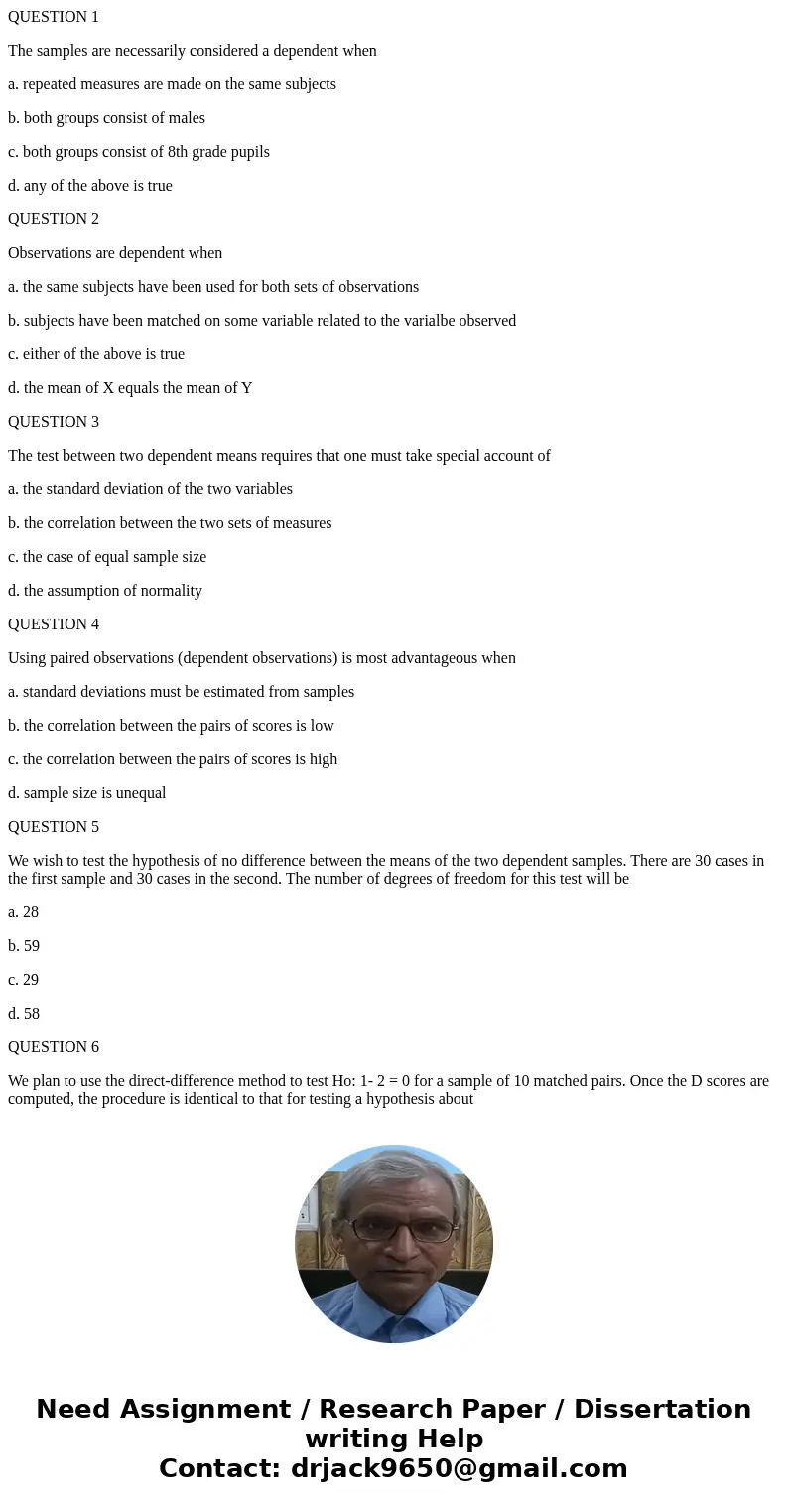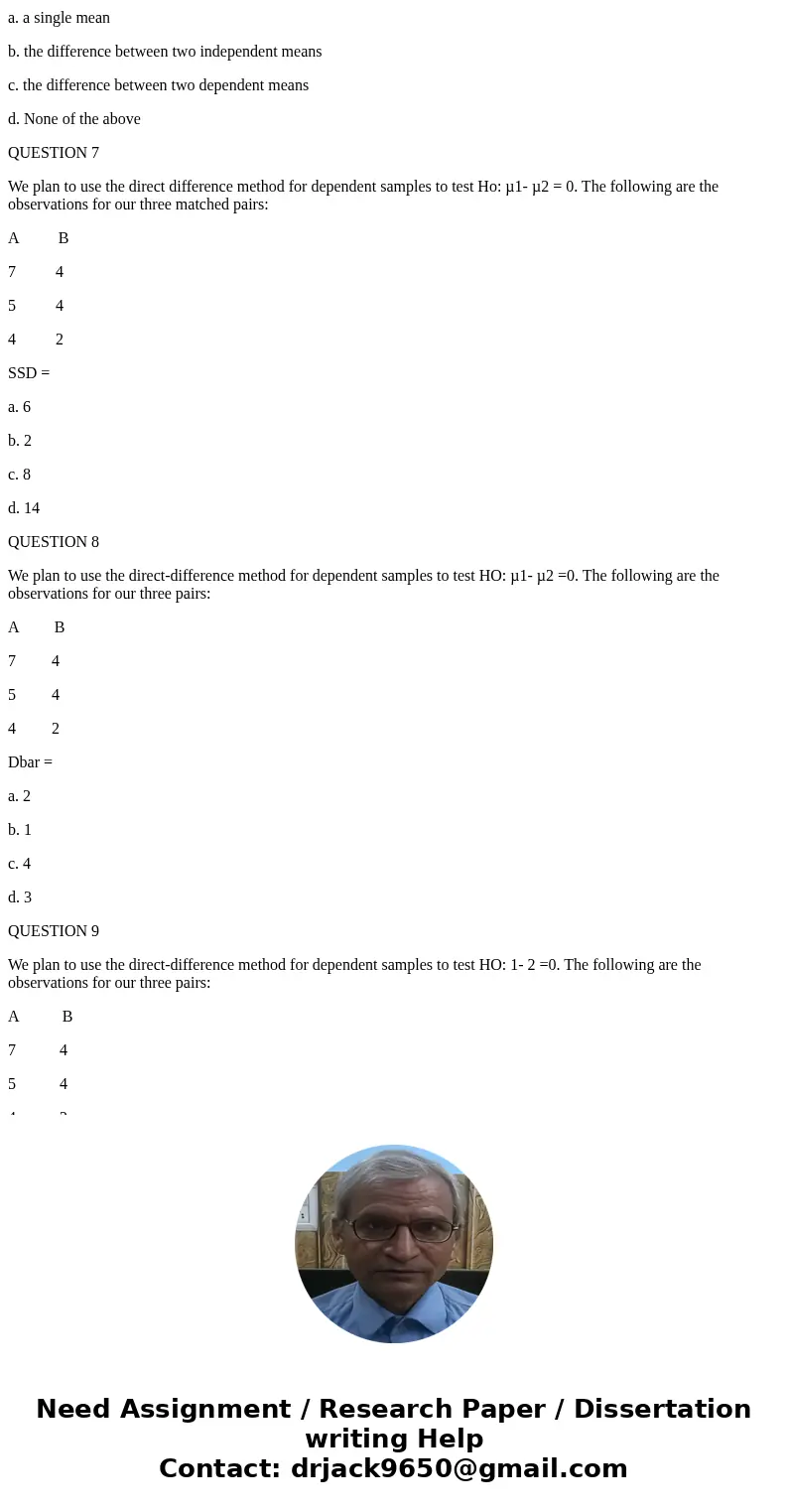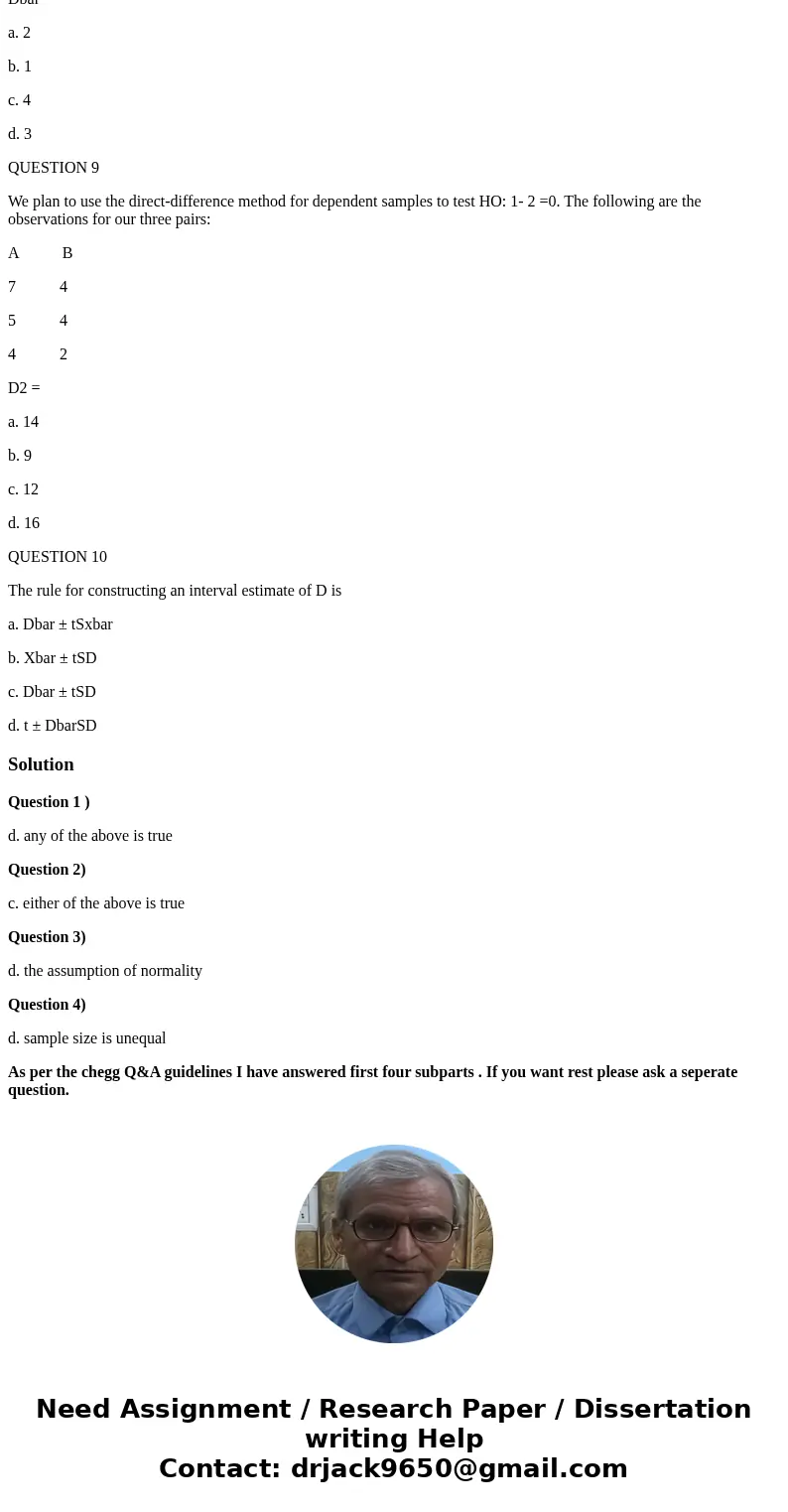QUESTION 1 The samples are necessarily considered a dependen
QUESTION 1
The samples are necessarily considered a dependent when
a. repeated measures are made on the same subjects
b. both groups consist of males
c. both groups consist of 8th grade pupils
d. any of the above is true
QUESTION 2
Observations are dependent when
a. the same subjects have been used for both sets of observations
b. subjects have been matched on some variable related to the varialbe observed
c. either of the above is true
d. the mean of X equals the mean of Y
QUESTION 3
The test between two dependent means requires that one must take special account of
a. the standard deviation of the two variables
b. the correlation between the two sets of measures
c. the case of equal sample size
d. the assumption of normality
QUESTION 4
Using paired observations (dependent observations) is most advantageous when
a. standard deviations must be estimated from samples
b. the correlation between the pairs of scores is low
c. the correlation between the pairs of scores is high
d. sample size is unequal
QUESTION 5
We wish to test the hypothesis of no difference between the means of the two dependent samples. There are 30 cases in the first sample and 30 cases in the second. The number of degrees of freedom for this test will be
a. 28
b. 59
c. 29
d. 58
QUESTION 6
We plan to use the direct-difference method to test Ho: 1- 2 = 0 for a sample of 10 matched pairs. Once the D scores are computed, the procedure is identical to that for testing a hypothesis about
a. a single mean
b. the difference between two independent means
c. the difference between two dependent means
d. None of the above
QUESTION 7
We plan to use the direct difference method for dependent samples to test Ho: µ1- µ2 = 0. The following are the observations for our three matched pairs:
A B
7 4
5 4
4 2
SSD =
a. 6
b. 2
c. 8
d. 14
QUESTION 8
We plan to use the direct-difference method for dependent samples to test HO: µ1- µ2 =0. The following are the observations for our three pairs:
A B
7 4
5 4
4 2
Dbar =
a. 2
b. 1
c. 4
d. 3
QUESTION 9
We plan to use the direct-difference method for dependent samples to test HO: 1- 2 =0. The following are the observations for our three pairs:
A B
7 4
5 4
4 2
D2 =
a. 14
b. 9
c. 12
d. 16
QUESTION 10
The rule for constructing an interval estimate of D is
a. Dbar ± tSxbar
b. Xbar ± tSD
c. Dbar ± tSD
d. t ± DbarSD
Solution
Question 1 )
d. any of the above is true
Question 2)
c. either of the above is true
Question 3)
d. the assumption of normality
Question 4)
d. sample size is unequal
As per the chegg Q&A guidelines I have answered first four subparts . If you want rest please ask a seperate question.



 Homework Sourse
Homework Sourse